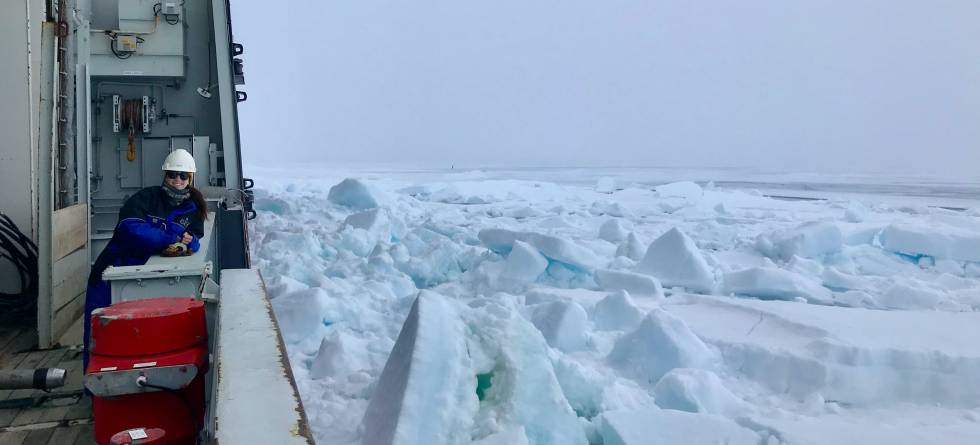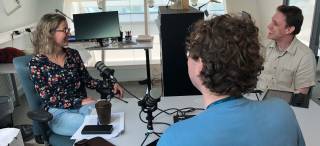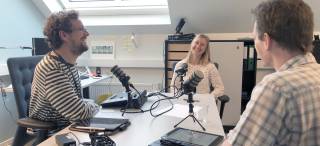The rapid retreating of Arctic sea ice is one of the most apparent consequence of our changing climate. To grasp its role in our global climate, Danielle Grant, PhD-researcher at NORCE and the Bjerknes Centre, is studying ancient DNA isolated from the ocean floor.
Listen to the podcast episode with Danielle Grant here:
Environmental DNA in the context of sea ice
As part of the EU-funded project AGENSI, Danielle Grant is examining ancient environmental DNA from the last interglacial period. Environmental DNA can be isolated from chunks of sea ice, surface water or in Grant’s case; from sediments on the ocean floor.
– The purpose of looking at DNA in the context of sea ice is to understand what environments the different types of sea ice support, by tracing genetic signature from past sea ice organisms. As time goes on different sediments are deposited and the layers build up on the ocean floor. We go to the bottom and collect a tube of mud full of geological history and use the sediment core to build back a DNA record, Grant explains.
Studying the past to understand the future
By analyzing genetic signature, the AGENSI-team is able to investigate natural sea ice variabilities. Because satellite and historical observations of past sea ice conditions are limited, this kind of research can generate essential knowledge about Arctic climate change.
– Around 130 000 years ago, at the transition to the last interglacial period, the world was slightly warmer. However, the temperature was quite similar to future climate predictions. Tracing natural sea ice variabilities in this period, may give us insight in what we might face in the future, Grant says.
Here you can watch the research team's expeditions to the Arctic Ocean:
Relying on available data
In full biohazard suit, Grant brings the collected sediment cores into the lab for initial sampling. The DNA she collects is often fragmented, so, to build up a record and identifying the organisms, Grant is dependent on other available biodiversity data.
– The DNA fragments we get can either be too short, or we are unsure of what it is. To trace it back we are reliant on openly available data from elsewhere. Making sense of the DNA signal that comes out of my sediment, is based on a whole patchwork of research that has already been done.
Bjerknes Climate Podcasts:
The podcast is produced by Stephen Outten and Ingjald Pilskog. Stephen Outten is a researcher at Nansen Environmental and Remote Sensing Center and Bjerknes Centre for Climate Research. Ingjald Pilskog is an associated professor at Western Norway University of Applied Sciences and connected to the Bjerknes Centre for Climate Research.
You can find all the episodes of the Bjerknes Centre podcast here. Find more episodes of the Bjerknes Climate podcast on Podbean, Apple, Spotify, or wherever you get your podcasts.




